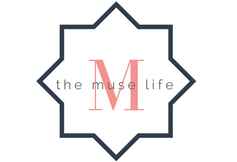Welcome to the Gallery FAQ section! I've tried to answer and offer advice on just about every question I thought of, or that you’ve asked — if I'm missing something give me a shout on this page.
Museum & Gallery Advice
Art Doesn't Bite
Seriously! My thesis mentor in undergrad was constantly reminding us of this whenever we went to a museum. Even while exploring the Carnegie Museum of Art with graduate art history students, he kept begging us to step closer and actually see what we were looking at. There’s a whole new world to explore when you're only standing 6-12 inches away from a piece of art. You can see individual brushstrokes, and sometimes you can actually see how an artist moved a figure a few inches in one direction, or that there originally was a person where there's now a plant — it's super interesting! It's like you're watching the work be made in front of you. So dash right up to the artwork, look at it from across the room, and also catch a glimpse of the artistry from the sides. Hey, walk around it if you can!
(If the art institution has a defined distance from where you should look, this is usually demarcated with a line or bar on the floor. Otherwise, get as up close and personal as possible.)
*Warning: Some organizations, like the Met Cloisters, have amazing state-of-the-art sensor systems. If you get too close you might risk an alarm going off. As long as you step back and aren’t actually touching the painting, you’re totally fine!
Photo or No Photo
I know, you hate the no photo signs and you like to pretend you don't see them. I totally get it, and can admit to sneaking a photo in St. Mark's Basilica (among other places) that are adamant about no photography, oops! A couple of things, copyright laws do also pertain to the art world, even on items that are centuries old, and your camera's flash can damage these works. Whether something was made last year or thousands of years ago they are both equally susceptible to light pollution and damage. Don't be the rude tourist snapping away with your flash on full tilt, enjoy the moment sans technology.
If you are allowed to take pictures make sure to triple check that your flash is off. To be honest, this is why most photo-free museums prohibit cameras — we have a bad track record with flash. Don't be upset if a museum docent tells you 'no photos,' they're just trying to ensure that the amazing thing you're looking at is available for the next several generations to enjoy.
Point With Your Words
Talk through what you see! Another piece of awesome advice from my thesis mentor. Even if you aren’t sure what you’re looking at or how to talk about it, if you have other musers with you, talk to them. Their opinion of something might shock you and make you see things quite differently, and vice versa. Pretty soon, you’ll be the culture and history pro and be able to wow them with your fun facts and scandalous gossip you collect along the way as you travel museums with me and hear the juicy details on the artists!
Do [or don't] Go With the Flow
Museum curators set exhibits and galleries up how they believe will make for the best impact on a viewer. But everyone learns differently, so go at your own pace (more on this below) and in whatever direction seems the best. Sometimes, curators explain how you should proceed through an exhibit, usually chronologically progressing through an artist’s life. I have to say, few institutions I’ve been to excel at this, and I frequently find myself retracing my steps because I didn't go through the exhibit in the 'correct' order. Even when I have had to circle back around because I’ve started at the 'wrong' part of an exhibit — like the end of an artist’s life instead of the beginning — it's meant that I had a chance to compare later works with an artist's earlier trials when starting out, which I think makes for a much more interesting experience. So, travel around the room however you think is best, there is no one correct way to experience art. Just experience it.
Pace Yourself
Museums and cultural institutions can be incredibly daunting and exhausting. I studied art history for four years and still can only do a max of 3 hours in one museum before I need a break (and that’s pushing it!). If you feel stuck or tired traipsing through hall after hall of artifacts and paintings, take a break. Everything you’re looking at either took the artist years to make or the curator years to place perfectly in the collection, so don’t feel like you have to stay for the art’s sake, it’ll still be there when you return. I find this most especially important when going to a large museum, like the MET or National Gallery in DC, look at the floor maps online and see what rooms you actually want to spend time in. Plot out your trip and hit all of the highlights you set out to see. I know this is difficult when you’re visiting a new city and may never return. Hopefully, between this site and the individual institution's website — you’ll be able to figure out where best to spend your time!
(I also fully believe in planning museum trips around food and find it a necessary refuel for staring at beautiful things for hours — in fact, coffee and pastry are a must when you've been enjoying a museum.)

